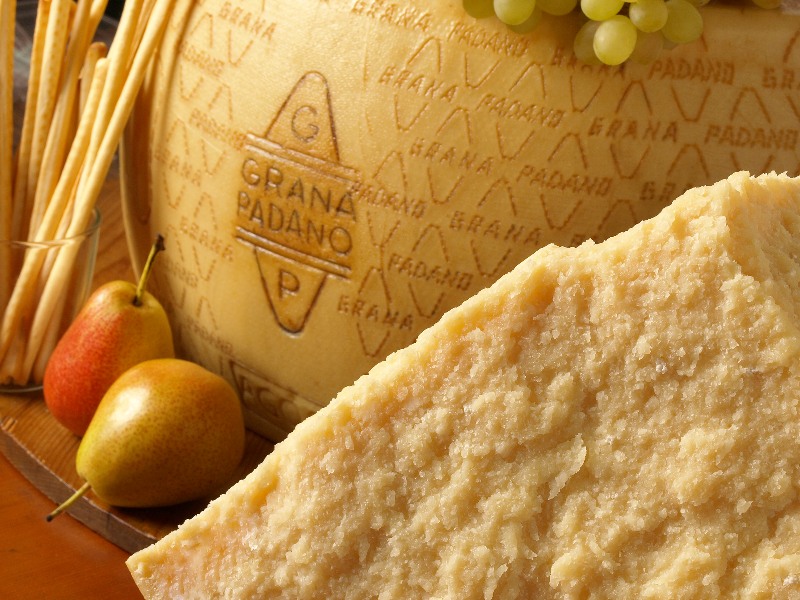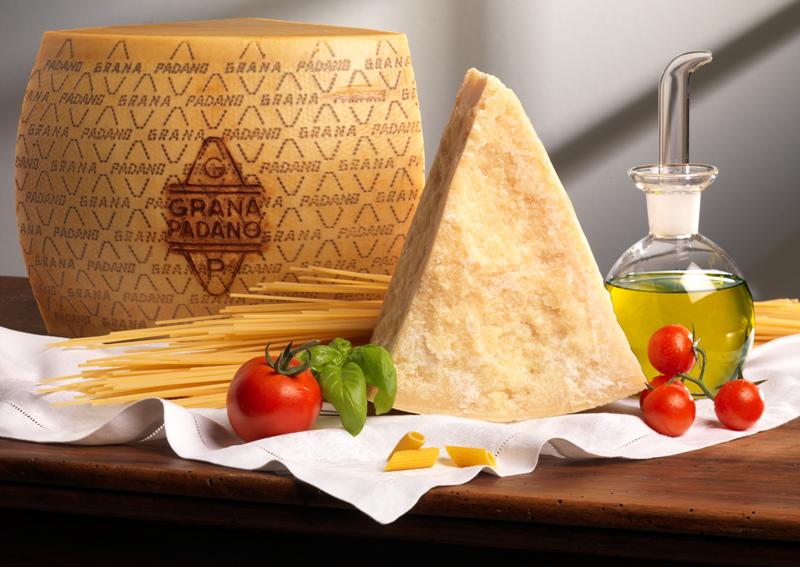Produced in the Po Valley and in many dairies in the lower Brescia area, Grana Padano is one of the gastronomic jewels that best represent Made in Italy in the world, and has been awarded the prestigious DOP mark (protected denomination of origin).
A hard cheese that is made all year round, Grana Padano is obtained from raw cow milk from two daily milkings, rested and partially skimmed by creaming.
The basic ingredients are milk, salt, and rennet. In the shape of a cylinder, a cheese wheel has a diameter of 35 to 45 cm, is 18 to 25 cm high, and weights 24 to 40 kg. The color of the rind is dark or natural golden yellow, while the paste is white or straw-yellow. The characteristic aroma is fragrant and delicate.


From the smallest grocery store to the largest supermarkets, throughout the province of Brescia Grana Padano is offered with different aging periods (Grana Padano DOP Riserva exceeds 20 months).
Grana Padano DOP: the perfect pairings
With its high organoleptic characteristics and its rich, full flavour , sweet and tasty at the same time and never aggressive, Grana Padano is always a protagonist of the table , both grated and as a meal cheese.
Pasta, risotto, soups, cured meats, appetizers: you’ll be spoilt for choice when it comes to making Grana Padano the ideal accompaniment to various preparations and a true touch of class that enriches the best recipes of Italian cuisine .

Grana Padano: a bit of history
Grana Padano originated in the year 1000, thanks to the ingenuity of Benedictine monks.
The land reclamation work they carried out in much of northern Italy had favored the spread of livestock breeding and an availability of milk far superior to the needs of the population. It was thus that the monks developed the ‘recipe’ of Grana Padano, an ingenious expedient for preserving excess milk.
A staple at Renaissance banquets of princes and dukes, Grana Padano has become one of the most prized Italian cheeses .
Request information










